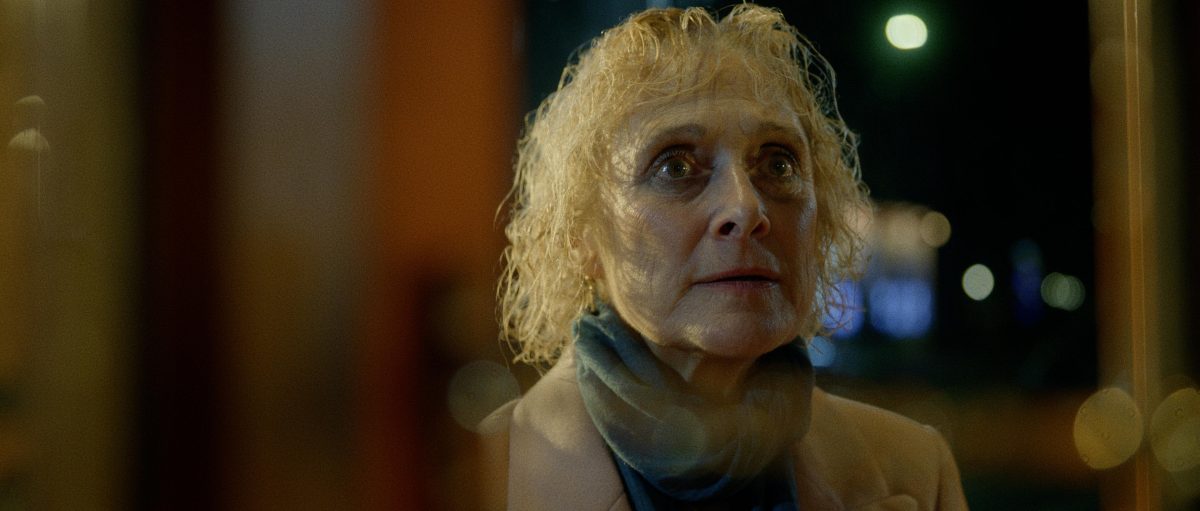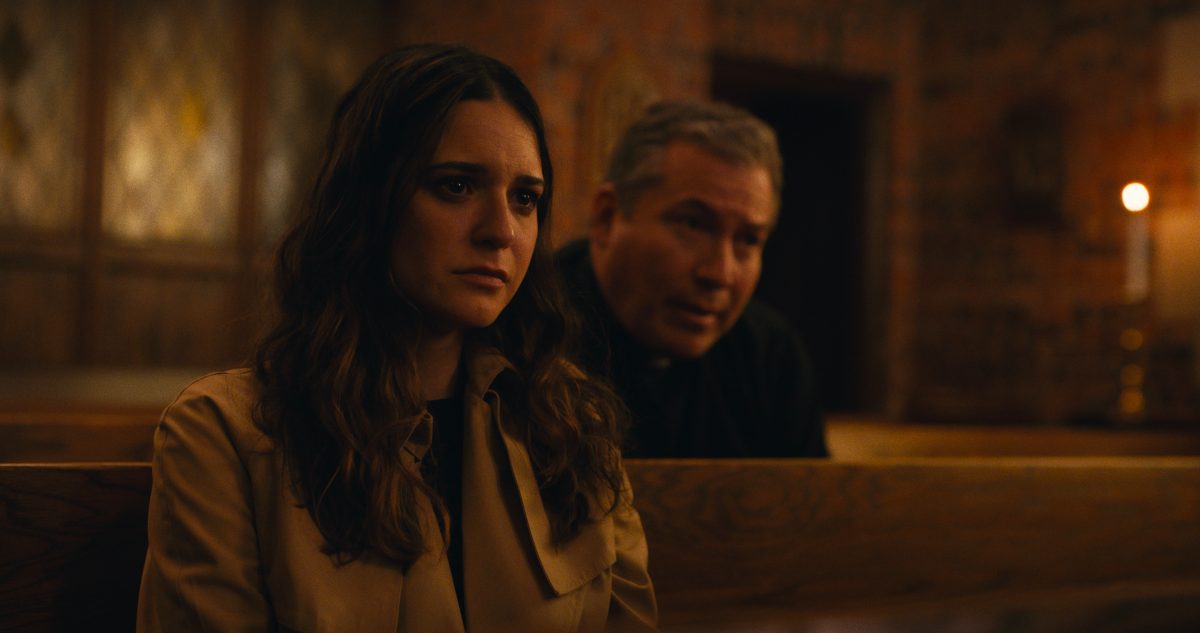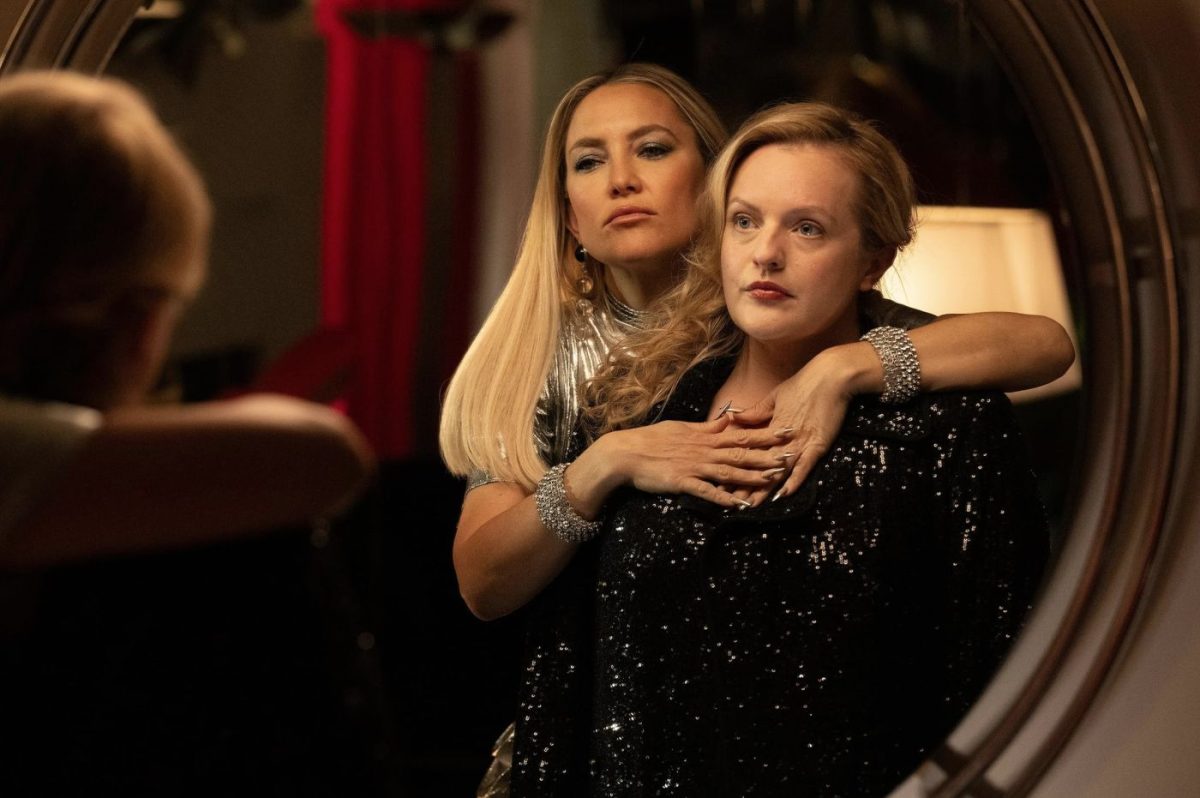“The Second Time” (2025) emerges as a whispered confession in the rain, a short film that wanders in the spaces between what is said and what we feel, between the world we see and the world we remember. Jack Howard, breaking away from his comedic roots, sculpts this moment of encounter in a way that feels like a promise and a visit from the past: the drizzle, the dark pavement, the neon sigh and the streetlights outside a small London café, all become more than just a place – it’s a mood, it’s a memory.
The story is simple: a closing waitress (Hannah Onslow) encounters a mysterious old woman (Caroline Goodall), but it’s the weight of the looks, the creaking of café doors, and the smell of rain that swells into something mythical in miniature. Onslow’s Elle is haunted but subtle: there’s a weariness in the way she moves, waits, closes the shutters. Goodall’s older woman carries a past that seems too expansive for her calm, each gesture suggesting love, regret, longing and loss. Howard trusts small gestures: a hand on a teacup, eyes moving in the lamplight, an extended silence – these become the weight of sadness and possibility.
Jack Howard’s The Second Time draws you into a rain-soaked London café, not with spectacle but with its exquisitely researched mystery of human pain. From the moment Elle (Hannah Onslow) closes her doors for the night and is joined by the mysterious older woman (Caroline Goodall), the film refuses to tone down its intensity. It doesn’t tell you everything, and that’s its strength: Howard’s choice of withholding—the details of the older woman’s identity, the full weight of Elle’s past, the delicate boundaries between memory and possibility—makes the short story not just a story but a mirror of your unspoken regret.
The way “The Second Time About” uses its framing and pauses feels like a challenge, a refusal to let the audience settle. In the opening minutes, when Hannah Onslow’s Elle closes down the café, the wide aspect ratio (2.35:1) gives Howard room to breathe: you see reflections in rain puddles, the distorted glow of streetlights, and wet asphalt that reflect Elle’s inner shiver. Her eyes catch the café’s light—soft and golden, but unforgiving of any edges—and she hesitates, wondering whether the older woman (Caroline Goodall) is a ghost, a memory, or an unrecognized version of herself. Rain is not just weather. It is emotional geography, washing away the edges of scenes, mixing inside with outside, and erasing certainty. The outside is cold, fragmented, open, reflective, looming; The interior is warm yet shady, intimate yet full of things left unsaid.
Onslow’s performance relies on pauses: the way she sets the teacup down with a little too much force, lingering on the sound echoing in the near silence; The way she folds her coat over the chair, drawing warmth around her; Her lips parted, but no words came. Goodall’s presence plays against Elle’s in these moments: the older woman speaks in a halting voice, time heavy in her voice, her words sometimes shaky, sometimes unnerving. Among them, gestures are considered more important than speeches. Light pools under the lamps, rain falls on the windows, and steam rises.
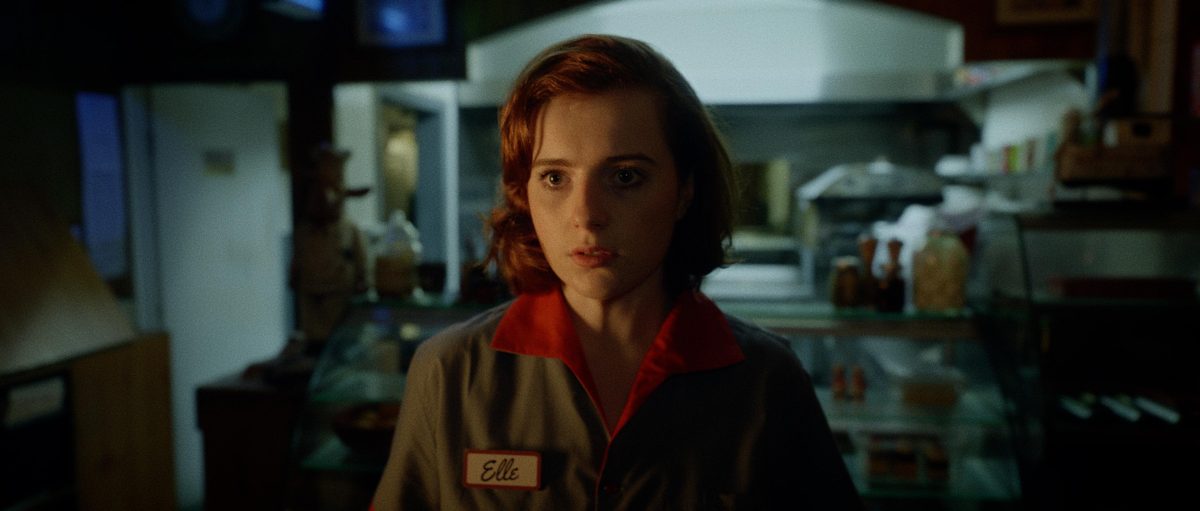

Howard doesn’t need flashy visual effects; He uses silence: the closing of a café, the click of a door, falling water, and the shudder of a reflection in a car headlight. When the film approaches its end, there is no clear revelation. Instead, Elle looked up. Maybe she sees hope, maybe guilt, maybe simply what she has been avoiding. The moment is unforced, and it is unstable. It remains. To me, the film is brave precisely in what it withholds. Life doesn’t always offer explanations, and grief doesn’t always find a solution. Howard’s artistry lies in his confidence that the audience holds his own unanswered questions – and here the pain runs deeper.
Elle and the older woman sit across from each other in the dim warmth of the café as day turns to night, their conversation a fragile web of half-spoken confessions, silences that speak louder than sentences, and the quiet hum of closing time that makes their words seem at once intimate and fleeting, as if suspended somewhere outside the ordinary hours. Every pause, every sip of tea, every glance toward the window or the umbrella resting on the chair carries the weight of unspoken histories, of lives that live in parallel but never quite intersect, and it is in this precise orchestration of small gestures that the film finds its hidden power.
Elle’s hesitation when she considers letting the older woman in is not just a reluctance to share space, but a careful calibration of trust, an acknowledgment that intimacy can be both a balm and a burden, and that this vulnerability requires a reckoning with past wounds that may never fully heal. The older woman’s inquiries about lost lovers, about what might have been, about the pain of “what ifs,” are not just questions but mirrors that reflect the hidden contours of Elle’s desires and regrets, and the act of listening becomes an act of courage, of daring to confront a self shaped as much by absence as by presence.
In the mundane choreography of pouring tea, peeking into an umbrella, and adjusting the folds of a sleeve, there is a profound narrative unfolding, a story of connection that refuses dramatic resolution and instead luxuriates in the tension between revelation and appreciation. Here, the film insists that love does not always lie in climactic confessions or grand gestures, but in the quiet acknowledgment of the other’s existence, in the shared recognition that pain and longing and memory do not always require expression, that some truths lie in the spaces between words, in the lingering scent of tea, in the almost imperceptible tremor of the hand that reaches across the table. This scene becomes a meditation on the human capacity to live in contradictions: to feel intensely yet speak sparingly, to approach closeness while maintaining inner boundaries, and to hold out the hope of connection without expecting redemption or reconciliation.
And in this meticulous, almost surgical, attention to the infinitesimal, the look, the pause, the hesitant movement, the film suggests that Second Chance is not a replay of lost opportunities, but a confrontation with oneself, a midnight reckoning with the desires, fears, and remnants of love that continue to shape perception long after words have failed.
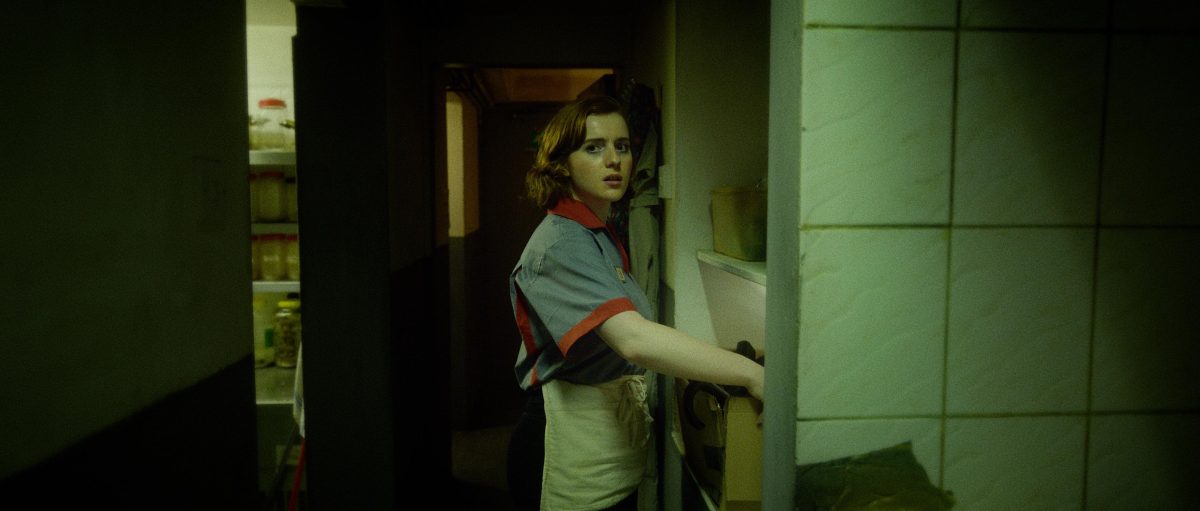

In this quiet, almost imperceptible encounter, the film reveals a radical idea: that intimacy is less about the narrative arc of romance than about the courage to confront what is left unsaid, to live in moments of vulnerability without being forced to resolve them, to recognize that longing can be a space of bearing witness, of holding, of understanding, that the act of simply being present for another human being, without explanation, without resolution, can itself be a form of love, deep, vulnerable. And I’m as eternal as the unspoken pain that brings Elle and the older woman together in the dying light of the café.
“The Second Time” is not just a film, it is a declaration of what cinema can do when it trusts the audience with accurate human weight. It doesn’t take explosions, contrived plot twists, or grand gestures to make you ache; It requires patience, attention, and emotional honesty. Jack Howard’s shift from comedy to this kind of intimate, claustrophobic resonance shows a filmmaker willing to take risks, but it’s also a reminder that risks can be uneven, and there are moments where the film’s pace slows, where the screenplay leans too heavily into repetition, and yet even those imperfections feel intentional, like hesitation is a texture, not a flaw.
Hannah Onslow and Caroline Goodall dominate the screen in ways that are at once quiet and radical: their gestures, silences, and glances carry histories that dialogue cannot capture, but the film occasionally flirts with sentimentality, threatening to undermine that subtlety. Howard’s use of rain, reflections, and dim cafés is remarkable in his insistence on the stickiness of memory, which undoubtedly shines like light in the damp streets. However, it sometimes risks indulgence in beauty, reminding you that even mastery can flirt with self-consciousness.
The narrative doesn’t neatly arrange grief or resolve longing, which is the film’s bold strength, but for viewers who crave momentum, it can feel slow, even punishing. However, it is in these very flaws that the film becomes rebellious: it rejects metaphor, it rejects closure, it refuses to sanitize the messy realities of human connection, it insists that intimacy exists in the pauses, almost unspoken.
It challenges the audience to sit in a state of discomfort, ambiguity, and vulnerability, an act of radical trust that most contemporary cinema eschews. He stays not because of the spectacle, but because he refuses to let you leave unchanged; The lost umbrella, the hesitant smiles, the dim café light, these are not aesthetic choices, they are tools of feelings, tools that make you confront your regrets, and your unsaid words. I walked away unsettled, realizing that the film’s courage lies in its restraint, its insistence on imperfection, and its refusal to offer easy answers. It’s bold, necessary, flawed, and unforgettable, all at once.
Read more: 25 Best Academy Award Winning Performances (Female)
Links to the short film The Second Time (2025): IMDb, mobi
